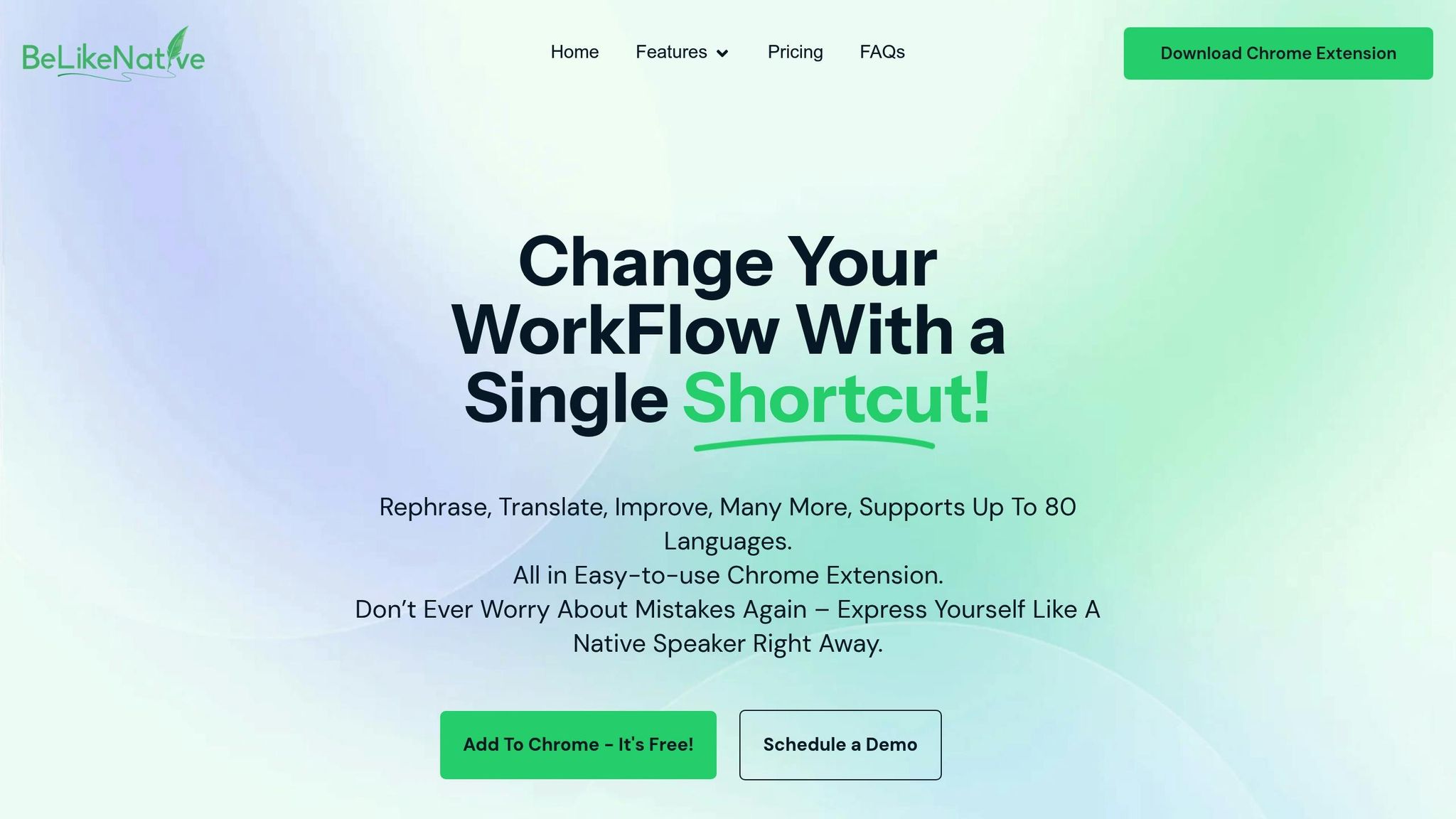Managing Regional Feedback in Localization
Want to improve your localization process? Managing regional feedback ensures your translations align with local preferences, avoid misunderstandings, and boost audience engagement. Here’s how to get started while want to ensure localized content:
- Set Clear Goals: Identify whether you’re addressing language accuracy, cultural context, or regional preferences.
- Use the Right Tools: Tools like BeLikeNative streamline feedback collection with support for over 80 languages and easy integration.
- Prioritize Feedback: Focus on input that impacts understanding and cultural relevance. Address critical issues first.
- Update Content Regularly: Spot recurring issues, create style guides for each region, and plan quarterly reviews with local experts.
Localized Content: Tips and Tricks – Secrets For Success
Localized Content: Setting Up A Feedback System
Establish clear goals and pick the right tools to gather input from regional stakeholders effectively.
Planning Feedback Collection
Start by identifying your goals – whether it’s understanding regional preferences, addressing cultural details, or ensuring language accuracy. Then, pick the communication methods that work best for your stakeholders. Options include shared documents, email, or collaboration platforms.
Setting Team Responsibilities
Designate regional reviewers to evaluate cultural relevance and terminology. Localization managers should oversee the process and integrate the feedback. Once roles are assigned, select tools that align with your team’s workflow.
Choosing Feedback Tools
Consider using tools like BeLikeNative. It allows you to rephrase, translate, and polish text in over 80 languages with clipboard integration, making feedback collection faster and smoother.
Localized Content: Managing Regional Input
Effectively gathering, assessing, and incorporating regional feedback involves a clear process. Here’s how to get started.
Feedback Collection Methods
Leverage both real-time and asynchronous tools to gather input. Use structured forms to document:
- Cultural context issues
- Language accuracy concerns
- Regional preference suggestions
- Market-specific requirements
Take advantage of BeLikeNative’s clipboard shortcuts for quick text adjustments. These tools allow regional reviewers to highlight content and apply rephrasing or translation shortcuts in over 80 languages, making feedback collection faster and more efficient.
Ranking Feedback Importance
Focus on feedback that has the greatest impact on understanding, cultural appropriateness, and urgency:
- Address critical issues like misunderstandings or cultural mismatches immediately.
- Reserve minor style or formatting changes for routine updates.
Adding Feedback to Workflows
- Record every suggestion along with its source, context, and priority. Review high-priority items during each cycle and group lower-priority items for later.
- Include regional stakeholders in the final approval process to ensure the content aligns with local needs and expectations.
sbb-itb-32359dc
Updating Localized Content For Regional Markets
Spotting Recurring Feedback
Dive into feedback logs to pinpoint recurring issues, such as mismatched terminology, tone inconsistencies, or cultural nuances. Group these observations and turn them into actionable style rules tailored for each region. Feed these rules directly into your localization process to streamline updates.
Adjusting Content for Regional Audiences
Create clear style guidelines that connect your global brand voice to the appropriate local tone for each region. Tools like BeLikeNative’s clipboard shortcuts can help you quickly apply approved changes across your content. Once your guidelines are ready, implement a structured review process to ensure consistency.
Keeping Content Updated
Plan quarterly reviews for each region. Assign these reviews to local experts, track all changes in a centralized system, and ensure feedback is shared with all relevant teams. Use your master style guide as a reference to maintain alignment with your brand’s core messaging across all regional updates.
Localized Content: Feedback Management Tools
Once you’ve outlined your needs, it’s time to evaluate tools based on specific criteria.
Key Features to Look For
Focus on tools that offer real-time collaboration, version control, and support for multiple formats. Also, make sure the tool integrates seamlessly with your workflow and includes:
- Multilingual support with Unicode compatibility
- Threaded comments for clear, organized discussions
- Role-based permissions to control stakeholder access
- API integration for automating workflows
- Export options for reporting and analysis
Now, let’s see how BeLikeNative stacks up against these requirements.
Localized Content for Feedback Management
BeLikeNative

BeLikeNative aligns well with the criteria above. It supports over 80 languages and allows inline feedback directly through clipboard integration.
Teams using BeLikeNative have reported a 66% boost in productivity.
Here’s how you can make the most of BeLikeNative:
- Set up custom shortcuts for repetitive feedback tasks
- Adjust language, tone, and style settings for each market
- Use the Native plan’s 4,000-character limit for detailed content processing
- Integrate with tools like Notion, Evernote Web, and Microsoft Teams
For enterprise users, the Premium plan is available at $14/month. It offers 125 daily uses and increases the character limit to 6,000.
Conclusion
Effectively managing regional feedback – through structured systems, prioritizing input, and keeping content updated – is key to improving localization efforts. Users of BeLikeNative have reported a 66% increase in productivity and 85 hours saved per month. The steps outlined in this article, from organizing feedback systems to selecting the right tools, all contribute to this outcome.
The foundation of success lies in collecting feedback systematically, using multilingual tools that can be tailored to specific needs, and integrating these tools into your workflows.
BeLikeNative supports over 80 languages, allows tone and style adjustments, and works smoothly with existing platforms.


